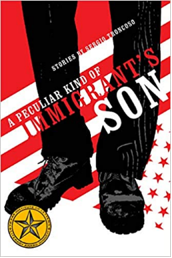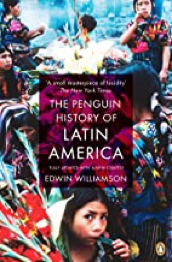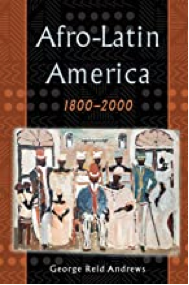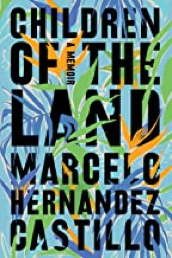Hispanic Heritage Month, celebrated in the United States every year from September 15th to October 15th, was established by President Reagan in 1988 through an executive proclamation. The month serves as an opportunity to honor the contributions of Latinos to this country and also as a time to acknowledge the work that remains to be done on civil rights issues such as immigration reform and workplace discrimination. This article highlights some of the ways you can celebrate Hispanic Heritage Month while still learning more about Latinos and their history and culture.
A Few Facts about Hispanics
According to the U.S. Census Bureau, the Hispanic population is growing three times as fast as any other demographic group in America, making Hispanics one of the fastest-growing ethnic groups in America. Hispanics make up 17% (54 million) of America’s total population and 26% (98 million) in terms of households. It was also reported that by 2050, approximately one-quarter (25%) of all Americans would be Hispanic. This growth has been partly spurred by Hispanics’ disproportionately young age profile: whereas about 50% percent are younger than 35 years old, only 33% of white non-Hispanics are below this age threshold.
Four ways to celebrate Hispanic Heritage Month
- Dedicate a day to a different ethnicity. You could dedicate this day to Mexican, Puerto Rican, Cuban, Colombian or Honduran heritage or any other Latin country.
- Watch a Spanish-speaking T.V. channel or listen to Spanish music while cooking. This will help you get into the spirit and add authenticity to your food.
- Clean your house with citrus fruits (oranges, limes, grapefruit) and add flowers to your living spaces to celebrate the festivities in style! Latin America is known for its rich culture and flair for design. Colorful plants and flowers will bring a new energy into your home.
- Read a Hispanic novel that ties in with Hispanic Heritage Month. We have listed a few of our favorites at the bottom of this post.
Five Famous Hispanic Figures in U.S. History
There are plenty of Hispanic figures in U.S. history worth celebrating. That’s why we have compiled a list for you. These influential Hispanics are heroes to Hispanics and Americans alike, shaping how we see ourselves today. Famous Hispanic Figures in U.S. History include:
- Gabriela Mistral- Nobel Prize winner (1946) who also won other awards like National Prize for Literature and UNESCO’s International José Martí Prize.
- Dolores Huerta- Labor leader who co-founded with César Chávez what became United Farm Workers (UFW).
- Gloria Anzaldua- Chicana writer, feminist activist, artist, and poet best known for her book Borderlands/La Frontera The New Mestiza.
- Gloria Estefan- Cuban-American singer, songwriter, actress, and record producer. Estefan became famous after joining the group called Miami Sound Machine, which was created when she was only 12 years old. She has since been inducted into both the Rock and Roll Hall of Fame and Billboard’s list of 100 most influential people.
- José Andrés- Spanish-born chef, entrepreneur, and author who immigrated to the U.S at age 15 without knowing how to speak English. He owns ThinkFoodGroup, one of the largest restaurant companies in the country, including such restaurants as Minibar by José Andrés and Jaleo Restaurants. Andres has been awarded multiple honors, including being named Times Chef of the Year and receiving the Presidential Medal of Freedom from Barack Obama during Hispanic Heritage Month in 2017.
Four Famous Latino Authors You Need to Know
Celebrating Hispanic Heritage Month by celebrating some of our favorite writers who happen to be Latinos! Ernesto Quiñones writes speculative fiction that incorporates magical realism, while Sonia Manzano’s story Encounter is based on her memoir. Isabel Allende is one of Chile’s most famous authors, with numerous best-selling novels like The House of Spirits under her belt. Roberto Rosas is an acclaimed Colombian poet and author whose work tackles both gender identity as well as gentrification in Queens. There are tons more contemporary Latino authors that deserve recognition – this list could never be exhaustive, but hopefully, we gave you a taste of what you can find out there!
Five Important Latino Historical Events
- The United States Becomes Possession of Mexico (1848)
- Cuban Independence Movement Begins (1902)
- The Spanish Civil War Begins (1936)
- Immigration Act of 1965 Signed into Law (1965)
- Haiti Liberated from Slavery (1804)
Additional Resources
This article on Hispanic Heritage Month has shown how important it is to celebrate this month because it is a time to reflect on our rich history and culture. So, join in on celebrating!
Please see the appendix below and check out more movies, documentaries, and books.
Latin Heritage Month Movies & Documentaries List
MOVIES
- Maria Full of Grace – Amazon. 17-yeard old Maria accepts an offer to travel to the U.S. The catch? The job requires Maria to help transport drugs across borders, which leads to a chaotic life in New York City.
- Under the Same Moon – Amazon. The story of a young boy who crosses the Mexican-American border to find his working mother in the United States.
- Coco – Disney. A young Mexican boy’s quest to find answers to his family’s musical secrets will take you on a fun and heartfelt cultural journey.
- In The Time of The Butterflies – Amazon. The story of the heroic Mirabal sisters during the dictatorship of Rafael Trujillo in the Dominican Republic. Starring Salma Hayek as Minerva Mirabal and Marc Anthony as Lio, these three sisters’ missions to overthrow the dictator made them leading female figures in history.
- Frida – Amazon. Salma Hayek embodies all of what it means to be Frida—her unwavering independence, inspiring creativity, and knack for all things unconventional.
- In the Heights – HBO Max. The film follows a similar plot to the musical, telling the story of a corner in the predominantly Dominican Washington Heights neighborhood of Upper Manhattan in New York City, where every community member pursues their dreams of a better life.
- Encanto – Disney. It’s a tale of an extraordinary family, the Madrigals. They live hidden in the mountains of Colombia, in a magical house, a vibrant town, and a wondrous, charmed place called an Encanto. The magic of the Encanto has blessed every child in the family with a unique gift from super strength to the power to heal—every child except one, Mirabel.
- The Father of the Bride – HBO Max. Billy and Ingrid (Gloria Estefan) are surprised when their eldest daughter Sofia announces a new fiancé, Adan, and plans for a quick wedding. The news keeps Billy and Ingrid from announcing that they’re planning to divorce… but they hold off for the benefit of the family. Billy’s initial opposition to the wedding cools so long as his opinions carry the most weight. Soon, Adan’s headstrong father arrives with his own traditions and family pride in tow. With the fathers vying to control the festivities, it becomes a game of one-upmanship—cultures clash, generations take sides, and competing traditions collide. All relationships are tested as the roller coaster ride of wedding planning races toward the altar.
DOCUMENTARIES
- History of Salsa From Africa to New York (Broken out in three parts) – YouTube
- Celia Cruz- American-Cuban Singer & Queen of Salsa Music | Mini Bio | Biography- YouTube
Latin Heritage Month Reading List
FICTION
Garcia Marquez won the only Literature Nobel Prize for Colombia with this novel. It was considered the author’s masterpiece and the foremost example of his style of magic realism. It is the story of seven generations of the Buendía family that also spans a hundred years of turbulent Latin American history, from the postcolonial 1820s to the 1920s.
This novel carries readers from the hills of Puerto Rico to the sugar plantations of Hawaii. Set in 1898, on the eve of the Spanish-American War, this is the story of a young couple struggling to survive amid epic events.
Lydia Quixano and her eight-year-old Luca must flee after a drug cartel murdered her husband and 16 members of her family. They find themselves miles and worlds away from their comfortable middle-class existence. Instantly transformed into migrants, Lydia and Luca ride La Bestia, a train that where they make their way north toward the United States, which is the only place the cartel’s reach doesn’t extend.
Alaine Beauparlant has heard about Haiti all her life, but the stories were always passed down from her dad—and her mom when she wasn’t too busy with her high-profile newscaster gig. But when Alaine’s life goes a bit sideways, it’s time to finally visit Haiti herself. What she learns about Haiti’s proud history as the world’s first black republic (with its even prouder people) is one thing, but what she learns about her own family is another. Suddenly, the secrets Alaine’s mom has been keeping, including a family curse that has spanned generations, can no longer be avoided.
Iris Odys is the offspring of Hagathe, a Haitian maid, and Brahami, a French-educated mixed-race father who cares little about his child. Hagathe, who’d always dreamt of a better life for her daughter, is presented with the perfect opportunity when Iris is five years old. Adopted by a white American couple, an anthropologist and an art gallery owner, Iris is transported from her tiny remote Haitian village, Monn Neg, to an American suburb.
How does a Mexican American, the son of poor immigrants, leave his border home and move to the heart of gringo America? How does he adapt to the worlds of wealth, elite universities, and the rush and power of New York City? How does he make peace with a stern, old-fashioned father who has only known hard field labor his whole life? Troncoso tells his luminous stories through the lens of an exile adrift in the 21st century, his characters suffering from the loss of culture and language, the loss of roots and home as they adapt to the glittering promises of new worlds which ultimately seem so empty.
NON-FICTION
This important study of Latinos in U.S. history spans five centuries-from the first New World colonies to the first decade of the new millennium. Latinos are now the largest minority group in the United States, and their impact on popular American culture, from food to entertainment to literature-is greater than ever. Featuring family portraits of real-life immigrant Latino pioneers and accounts of the events and conditions that compelled them to leave their homelands, Harvest of Empire is required reading for anyone wishing to understand the history and legacy of this increasingly influential group.
This acclaimed history of Latin America tells its turbulent story from Columbus to Chavez. Beginning with the Spanish and Portuguese conquests of the New World, it takes in centuries of upheaval, revolution, and modernization up to the present day, looking in detail at Argentina, Mexico, Brazil, Chile, and Cuba, and gives an overview of the cultural developments that have made Latin America a source of fascination for the world.
A young woman’s journey from the mango groves and barrios of Puerto Rico to Brooklyn, and eventually on to Harvard.
In 2009, when Raquel Cepeda almost lost her estranged father to heart disease, she was terrified she’d never know the truth about her ancestry. Every time she looked in the mirror, Cepeda saw a mystery–a tapestry of races and ethnicities that came together in an ambiguous mix. With time running out, she decided to embark on an archaeological dig of sorts by using the science of ancestral DNA testing to excavate everything she could about her genetic history.
In this, the first history of the African diaspora in Latin America from emancipation to the present, George Reid Andrews deftly synthesizes the history of people of African descent in every Latin American country, from Mexico and the Caribbean to Argentina. He examines how African people and their descendants made their way from slavery to freedom and how they helped shape and respond to political, economic, and cultural changes in their societies. Individually and collectively, they pursued the goals of freedom, equality, and citizenship through military service, political parties, civic organizations, labor unions, religious activity, and other avenues.
Since its U.S. debut a quarter-century ago, this brilliant text has set a new standard for historical scholarship of Latin America. It is also an outstanding political economy, a social and cultural narrative of the highest quality, and perhaps the finest description of primitive capital accumulation since Marx.
Sophisticated, provocative, and deeply human, Translation Nation uncovers how Hispanic Americans are forging new identities, redefining the experience of the American immigrant, and reinventing the American community. It is a book that rises brilliantly to meet one of the most profound shifts in American identity.
This unforgettable memoir from a prize-winning poet about growing up undocumented in the United States recounts the sorrows and joys of a family torn apart by draconian policies and chronicles one young man’s attempt to build a future in a nation that denies his existence.
In this inspirational and unflinchingly honest memoir, acclaimed author Reyna Grande describes her childhood torn between the United States and Mexico and shines a light on the experiences, fears, and hopes of those who choose to make the harrowing journey across the border. It is an important account of the many ways immigration impacts children.

























